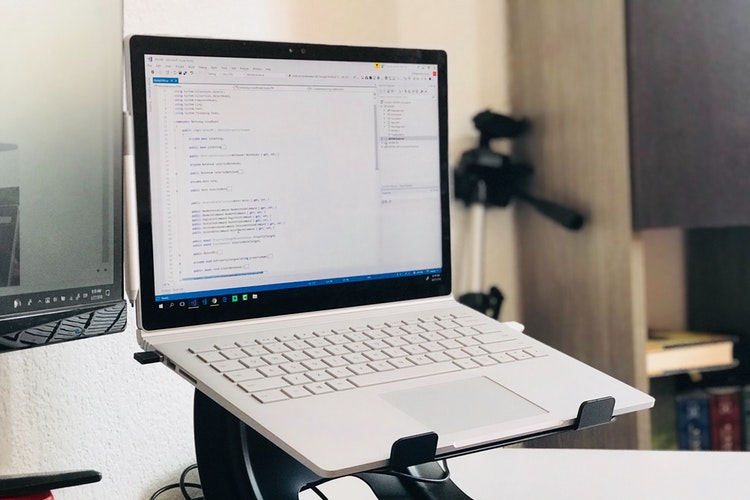
Today the loading speed of a website is essential for its success. Google, Yahoo and Amazon made tests that has actually shown the value of performance.
In other words:
- Google slowed down their page for 500ms – 20% drop in traffic
- Yahoo slowed down their page for 400ms – 5-9% drop in full-page traffic (users leaving before website completed loading).
- Amazon decreased their page for 100ms – 1% drop in sales.
- 20% of traffic lost for Google … enormous drop.
Ways to enhance the front-end to obtain the maximum loading speed.
Front-End Optimizing is enhancing a site with various strategies to achieve the fastest possible loading speed. In this case, just the Front-End counts. The Front-End is the part of the website that is moved and executed/rendered to the customer (internet browser) and includes at least the following four parts:
– HTML code
– CSS code
– JavaScript code
– Image files (optional media files like .swf, .mov,.mp3,… )
How does Front-End Performance Optimizing Work?
The different parts of the optimizing process are:
1. Common HTML Programming Tasks
– Avoid HTML errors (W3C Validation)
– Delete comments from HTML document
2. Common CSS Programming Tasks
– Avoid CSS expressions
3. Optimizing HTML
– Optimize the order of styles and scripts
– Avoid usage of tables for website design
– Avoid usage of inline styles
– Avoid usage of inline JavaScript
4. Optimizing CSS
– Remove unused CSS
5. Optimizing JavaScript
– Remove unused JavaScript
6. Minimize HTTP Requests
– Combine external CSS
– Combine external JavaScript
– Use CSS Sprites to reduce the number of images to download
7. Compressing CSS/JavaScript/image files
– Minify combined CSS
– Minify combined JavaScript
– Optimize image file size with tools like Yahoo SmushIt
8. Reduce download size and increment number of concurrent downloads
– Serve static content (CSS/JavaScript/image files) from a cookieless domain
– Parallelize downloads across hostnames
9. Server-Side Compression and Browser Caching
– Enable compression (mod_gzip/mod_deflate on Apache web server)
– Leverage browser caching (mod_expires on Apache web server)
– Specify a Difference: Accept-Encoding header (mod_headers on Apache web server)
These are the essential parts to get a really fast loading website.
The following online tools can help you to get the best results:
- Combining and Minifying CSS/JavaScript files – Scriptalizer
- Minifying JavaScript/CSS files – e.g. the compressor at ebiene.de
- Compress Graphic files – Yahoo! SmushIt
- Minify CSS/JavaScript and Compress Graphic files with Google Page Speed for Firebug (Firefox addon)
- Another tool to check the loading time compared to other sites: Compare loading speeds of websites – whichloadsfaster.com
Some sites have more JavaScript and content then the Google start page however loads as two times as quick (obviously, it depends from where you access the website).
To get such a fast loading site is not impossible, it should be a must to please your visitors.
Tips to Enhance Web Performance
Be it a desktop or a mobile, their expectations of site loading and the interface does not alter. Thus, it is considerable to offer the users the very best of site styles and browsing experience. Just getting a website re-sized by a software application development business will not solve your issue. If your users have to toggle in between mobile gadget and their desktop, it is an indication that you have to enhance on the website design. Below are a few tips that will assist you in making an outstanding responsive website to gain maximum conversions.
- Enhance Images – Images are accountable for the slow page loading as well as, the reality cannot be disregarded that the users search for high resolution images. To resolve this issue, you can utilize the services such as Adaptive images. The service is a small PHP script that resizes and immediately scales down the images by identifying the screen size.
- Enable Compression – Use Gzip to compress your resources. It minimizes the variety of bytes a single page sends out throughout the network. Likewise, by getting rid of unneeded line breaks, and white spaces, minify CSS and JavaScript. This will minimize file size and increase downloading speed. With a better loading speed, the efficiency of the website is likely to be high.
- Delete Unnecessary Page Aspects – Identify elements on the internet page that are contributing least to bring traffic. For instance: If your site has more than one Signup kind, find the kind which is offering few register and remove it. Also, if you have social sharing button on the web page which are not efficient, it makes sense to eliminate them as it might take in big volume of bandwidth.
- Quality Hosting Solutions – There is a range of hosting service that may please a cheap spending plan, cloud computing and those that may deserve million dollars. Depending on your budget plan, select the very best hosting solution, but do not go for inexpensive solutions as they might not be trusted. Analyse your competitors who are doing well, learn which hosting company they are utilizing and you can too purchase that robust server to achieve high efficiency.
- Usage of Content Delivery Network – Think about speed and bandwidth while picking a network. The company needs to have locations neighbouring your maximum target audience. SpaceCDN are both economical and popular Content Delivery Networks.
Make use of the above described ideas and achieve high rates of customer complete satisfaction and conversion. Consult a web advancement business for any other help.
Summary
Google recommends loading times under 500 ms for a website. The tests mentioned above has actually proven that visitors do not wish to wait to obtain the information they need. The faster your site is loading the more visitors you get, the more conversions/sales. The loading speed of websites will affect your ranking in search engines, earlier or later on.